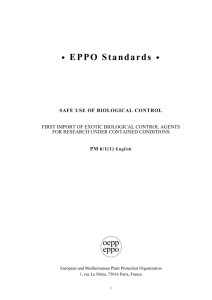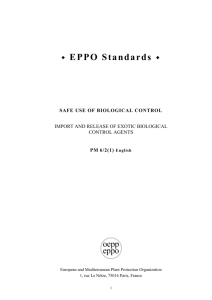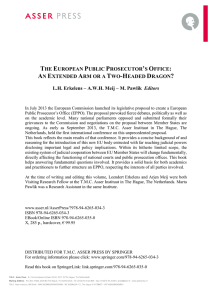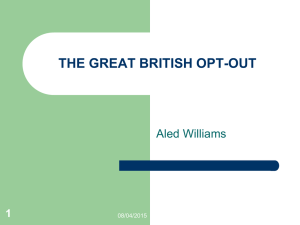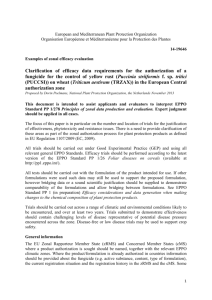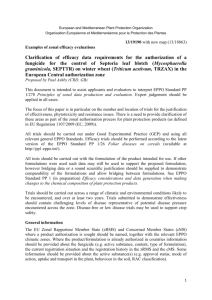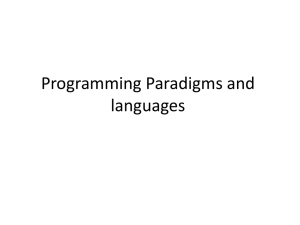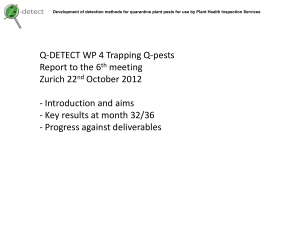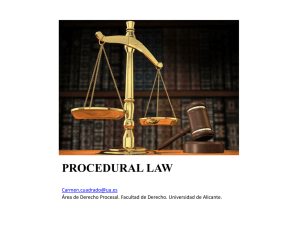Powerpoint: "The European Public Prosecutor`s Office"
advertisement
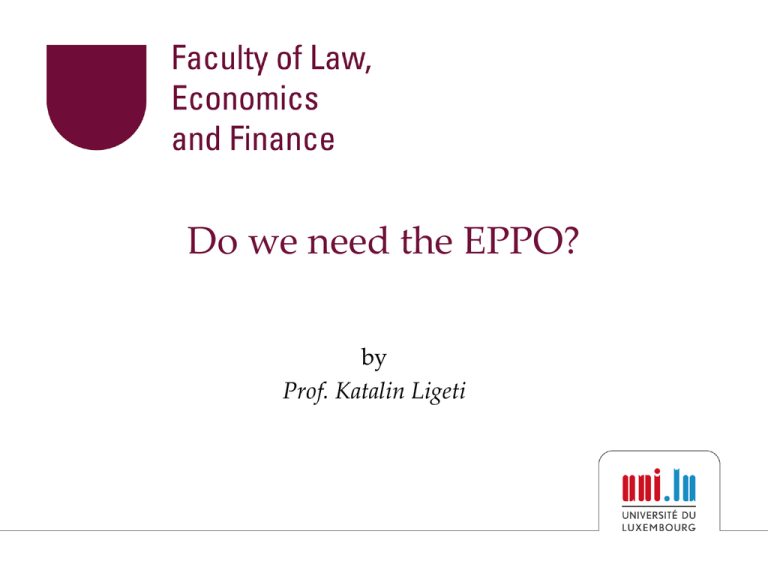
Do we need the EPPO? by Prof. Katalin Ligeti 1. The reasons: non-investigation and non-prosecution of EU fraud • Art 86 TFEU is a recognition of the fact that the problems are real and need to be faced • suspected fraud amounts to approximately 600 million euro annually on the revenue and expenditure side (2010 Commission report on the protection of the Union's financial interests) 2. Double dark numbers • There are no substantiated estimates of the actual level of PIF offences – not at EU level nor at the level of MSs. • Perceptions on the gravity of the problem vary considerably. • The magnitude of PIF offences is characterised by a double dark number: - irregularities under EUR 10000 are not reported to OLAF (in EU agricultural funds 87% of the overall number of payments is below this threshold), - reporting behaviour varies considerably between Member States. 3. Irregularities and fraud with agricultural funds (EAGF and EAFRD) 2010 France Germany Spain UK Italy Bulgaria EU-27 total Overall agricultur al expenditu re (million EUR) 9 417 Irregularities (number of reports) Suspected fraud (number of reports) Irregularity rate (%) Fraud rate (%) 119 0 0.1 0.0 6 687 81 7 0.1 0.1 6 838 413 1 0.3 0.0 3 822 33 2 0.1 0.0 5 491 342 168 0.7 6.0 559 94 87 0.8 7.6 53 320 1 825 407 0.2 1.2 4. Obstacles to effective prosecution • PIF offences are less and less limited to one Member State and more and more have a cross border dimension. • National practitioners see often only the national part of the case. • MLA is sought to investigate and prosecute only the national part of the offence. • National authorities tend to ignore the European dimension of cases. • Eurojust implies by nature the fragmentation of prosecution. 5. The Treaty framework • Under Articles 310(6), 325, 85 and 86 TFEU, the EU will have the competence to adopt criminal law provisions to protect the financial interests of the EU. • Proposal on the harmonisation of offence definitions in respect of offences against the financial interests of the EU (July 2012). • Reform of Eurojust – ongoing. • Envisaged legislative proposal on the «establishment of the EPPO to protect the financial interests of the EU” containing the institutional aspects of the EPPO, procedural rules of the EPPO, if any, a new legislative framework strengthening exchange of information in multidisciplinary investigations. 6. Policy and legal issues related to Art. 86 TFEU • Scope of competence. • Degree of harmonisation required (both substantive and procedural law). • Relationship with existing EU bodies and actors Eurojust, OLAF, Europol. • Powers of the EPPO. • Judicial control of the EPPO. 7. What is the EPPO? • There is often reference to a centralised or decentralised EPPO without clarity whether it refers to the powers or the structure of the EPPO. • One may distinguish between 3 models College–type EPPO, Integrated EPPO, Supranational EPPO. 8. College-type EPPO • The EPPO is a collegial body composed of prosecutors appointed by the MSs. • Decisions are taken by majority on initiating investigations and prosecutions. • Evidence collected by the national authorities is sent to the EPPO and made available to the other EPPO-states. 9. Integrated EPPO • The EPPO is an EU-body with a hierarchical structure and decision making. • The EPPO has a two-layer structure: a central office assisted by deputy prosecutors embedded in national systems . • Deputy prosecutors may be envisaged in different ways (antenna office, network or a combination of both). • The EPPO relies on national investigation bodies (may have, however, investigators also in the central office). • The EPPO would be created by integrating available manpower from OLAF and Eurojust. • The integrated model could work both on the bases of national criminal procedural law and a harmonised set of procedural rules. 10. Supranational EPPO • The EPPO is an EU-body with a hierarchical structure and decision making. • The EPPO has a single central structure with prosecutors who could act on the whole European territory. • The EPPO directly instructs national investigation bodies. • The supranational model would be based on harmonised set of procedural rules. 11. Braking the ice…. • Formal position taken by Member States: Spain: Proposal of the Spanish Presidency (2009) of a decentralised EPPO . Conseil d’Etat: Refelexions sur l’institution d’un Parquet européen (24 February 2011). Bundesrat: Beschluss (8 July 2011). Dutch Ministry : Position of the Dutch Minister of Security & Justice on European criminal law and the EPPO(8 November 2011). • Position taken by organisations of practitioners : Declaration of the General Prosecutors of Visegrad countries (29 April 2012), Deutsche Richterbund. • Round table discussion organised by Vice-President Reding on 25 June 2012. (see www.eppo-project.eu) 12. Position of EU bodies and agencies • OLAF has always supported the idea of the EPPO. It favours a specialised investigation and prosecution service for PIF offences the optimal use of exiting resources. • Eurojust recognizes that a thorough impact assessment of the need for the creation of the EPPO is essential. • Europol in principle supports the EPPO, but its mandate and scope of competence needs to reflect a holistic and balanced solution vis-à-vis existing arrangements in police cooperation. 13. Research project on the EPPO • 2010-2012: Study on “EU model rules for the procedure of the EPPO” comparative law study of the 27 national systems of investigation, prosecution and procedural safeguards elaborating model rules of supranational investigations, prosecutions and procedural safeguards. • The Draft Model Rules are available at (www.eppoproject.eu).
